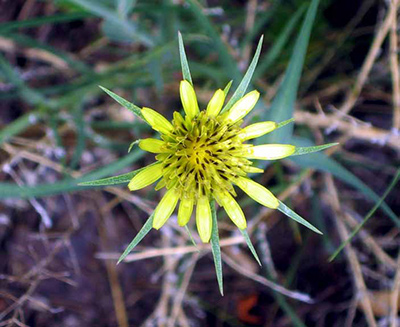Exotic plants take a heavy toll on biodiversity around the world. In the United States, exotic plant species invade tens of thousands of hectares every year, outcompeting native species and causing many to become threatened or endangered. Fire, flood, and other natural disturbance regimes can also be altered by exotic plants, broadly affecting land management.

© Safiya Jetha
The National Park Service combats the threat of exotic plant invasions with regional Exotic Plant Management Teams that remove infestations and help to re-establish native plants. Before the teams can do this important work, however, parks need an accurate map of where and what types of exotic plants occur within their boundaries. The Southern Colorado Plateau (SCPN) Network of the National Park Service identified three small national monuments that lacked good maps: Aztec Ruins NM, Salinas Pueblo Missions NM, and Walnut Canyon NM. SCPN worked with partners to inventory exotic plants in these parks in 2008 and 2009 as the first step towards restoring native species and healthy ecosystem functioning.
Inventories
Parks
Aztec Ruins NM is a World Heritage site that protects Ancestral Puebloan ruins in northwestern New Mexico. Immediately bordering the town of Aztec, the monument has many exotic plants as a result of past agriculture, livestock grazing, and nearby urban development. Salinas Pueblo Missions NM in central New Mexico preserves the archeological and structural remains of ancient Pueblo peoples and 17th century Spanish Franciscan missionaries. For both of these small monuments, SCPN set up an NPS-funded Colorado Plateau Cooperative Ecosystem Studies Unit agreement with Dr. Julie Korb at Fort Lewis College to inventory exotic plants. Aztec Ruins was inventoried in 2008, and Salinas Pueblo Missions NM was inventoried in 2009.
Walnut Canyon NM preserves the cliff dwellings and other archeological remains of the prehistoric Sinagua culture in north-central Arizona. In the summer of 2008, monument staff conducted a survey for exotic plants in high visitor use areas only. To cover the remaining area, SCPN set up a Colorado Plateau Cooperative Ecosystem Studies Unit agreement with Dr. Ron Hiebert, funded by NPS, to inventory the visitor-restricted Resource Preservation Zone of the monument for exotic plants later in the summer of 2008.

© Julie Korb
Surveys
At each of the three monuments, researchers set up a grid of approximately 2-ha cells covering the entire inventory area. All cells were sampled in Aztec Ruins NM, while only a portion was sampled in Walnut Canyon and Salinas Pueblo Missions NMs. Within each grid cell, researchers walked a 50-m belt transect, collecting plant species, cover and frequency data. They also walked the remaining area of the cell outside the belt transects to search for additional exotic species. The inventory projects provided park managers with a variety of up-to-date information about exotic plants in each monument. The final reports (see below) include species lists, as well as quantitative data about the amount (cover) and distribution (frequency) of exotic plant species throughout the monuments. Detailed maps show where each species was detected. Researchers also found and collected vouchers for previously undetected exotic plant species in each monument.

© Julie Korb
Management Applications
With this detailed information in hand, researchers were able to offer specific management recommendations for prioritizing exotic plant control efforts. One of the highest priorities, for example, was to get rid of exotic plants identified as noxious weeds within the state. Each monument had a few of these species. Researchers recommended targeting newly established exotic plants to prevent their spread, as well as those with the highest cover and frequency because of their large impact. Researchers also described effective ways to protect existing native plant populations and help them to expand.
Project Reports
Hiebert, R. D., and H. Hudson. 2010. Inventory of exotic plant species occurring in the Resource Preservation Zone of Walnut Canyon National Monument, Arizona. Natural Resource Technical Report NPS/SCPN/NRTR—2010/314. National Park Service, Fort Collins, Colorado.
Korb, J. E. 2010. Inventory of exotic plant species occurring in Aztec Ruins National Monument. Natural Resource Technical Report NPS/SCPN/NRTR—2010/300. National Park Service, Fort Collins, Colorado.
Korb, J. E. 2011. Inventory of exotic plant species occurring in Salinas Pueblo Missions National Monument. Natural Resource Technical Report NPS/SCPN/NRTR—2011/422. National Park Service, Fort Collins, Colorado.
Prepared by Sonya Daw, Southern Colorado Plateau Network Inventory and Monitoring Program, 2014.
Last updated: May 7, 2018
